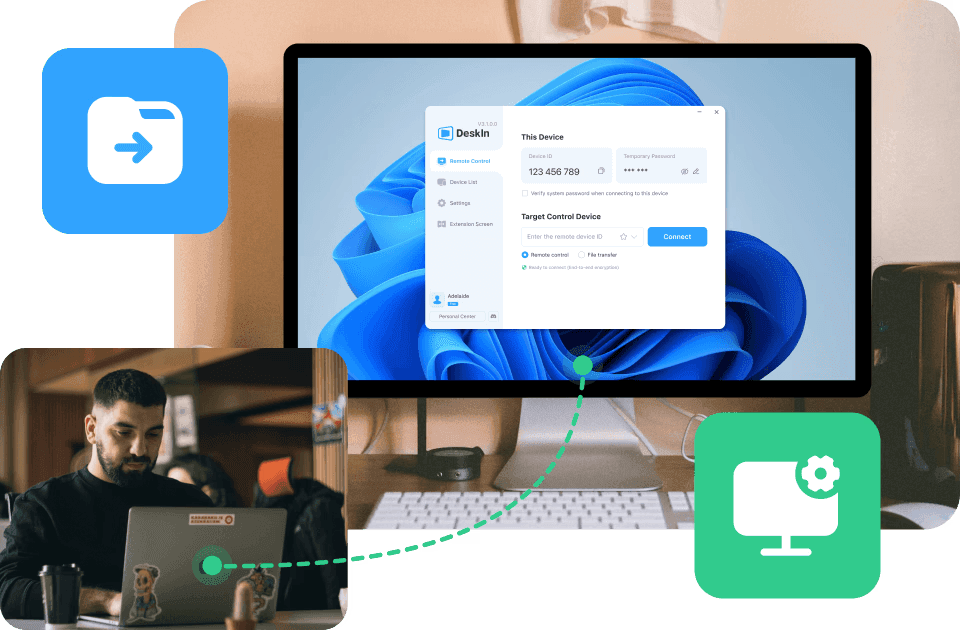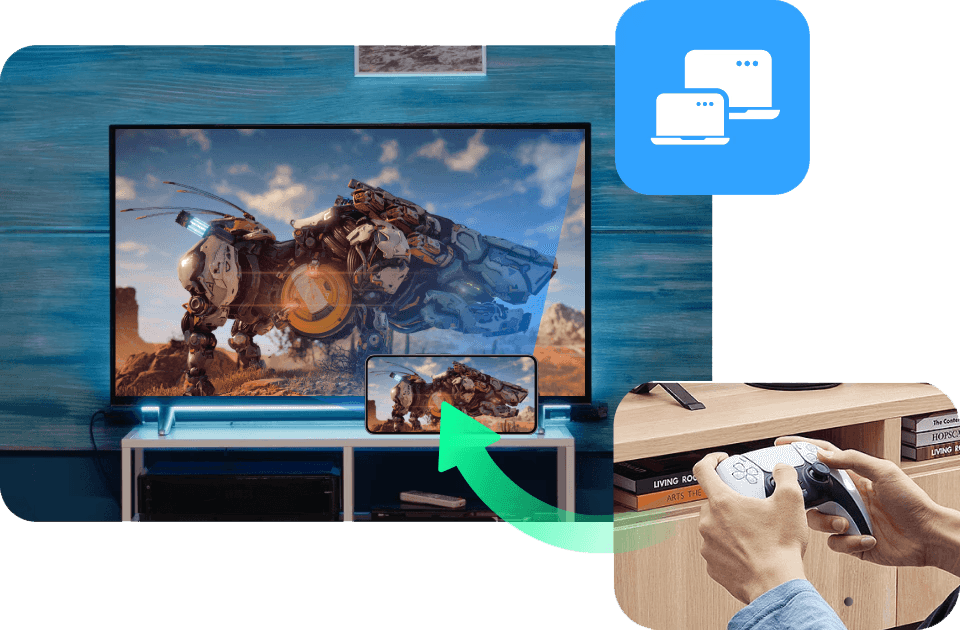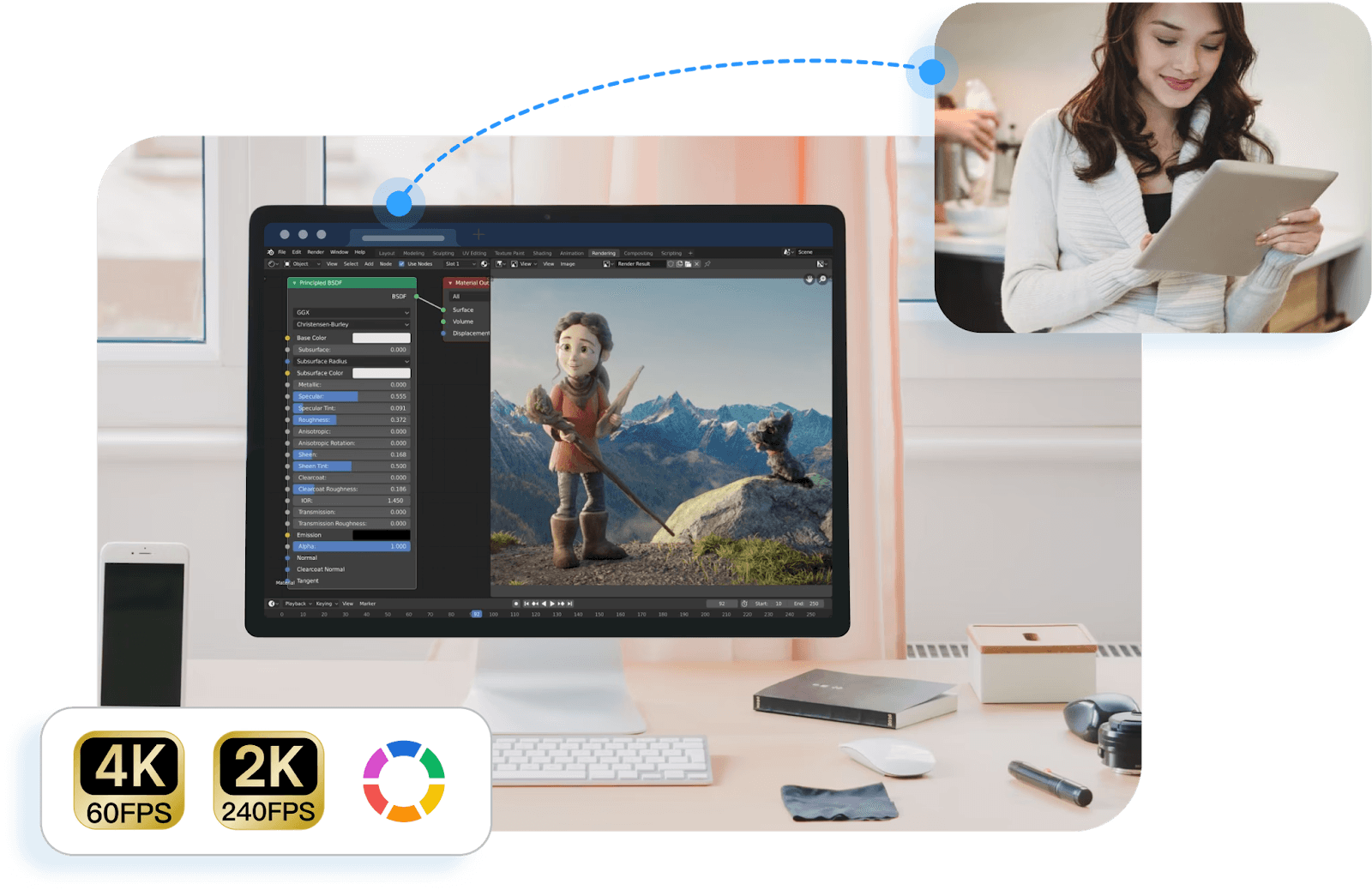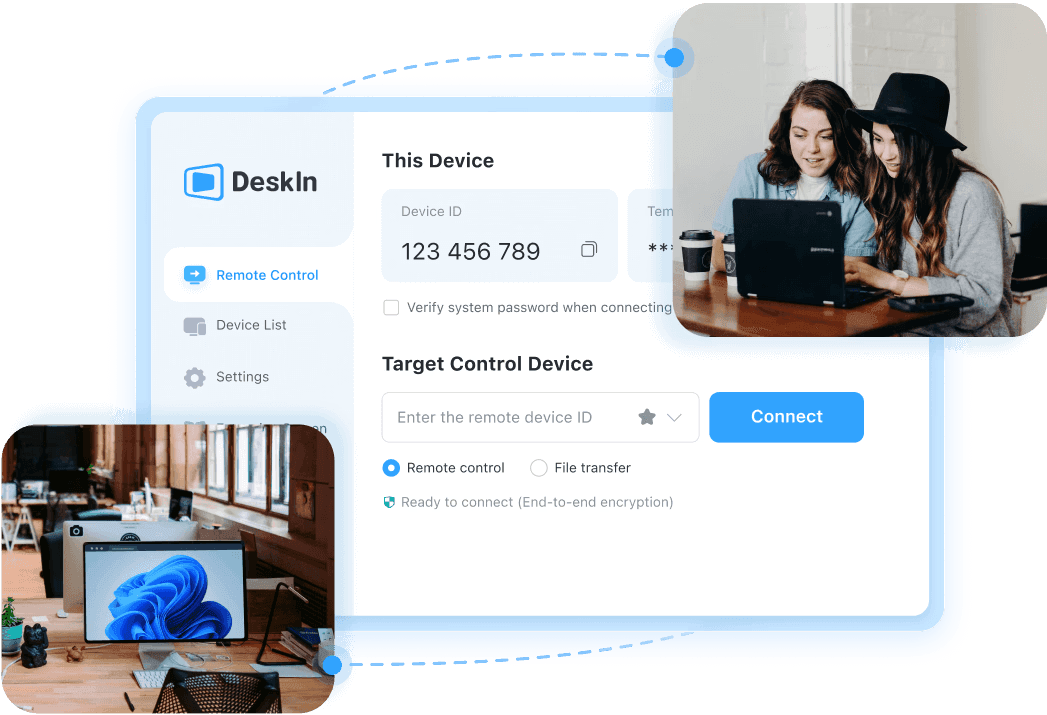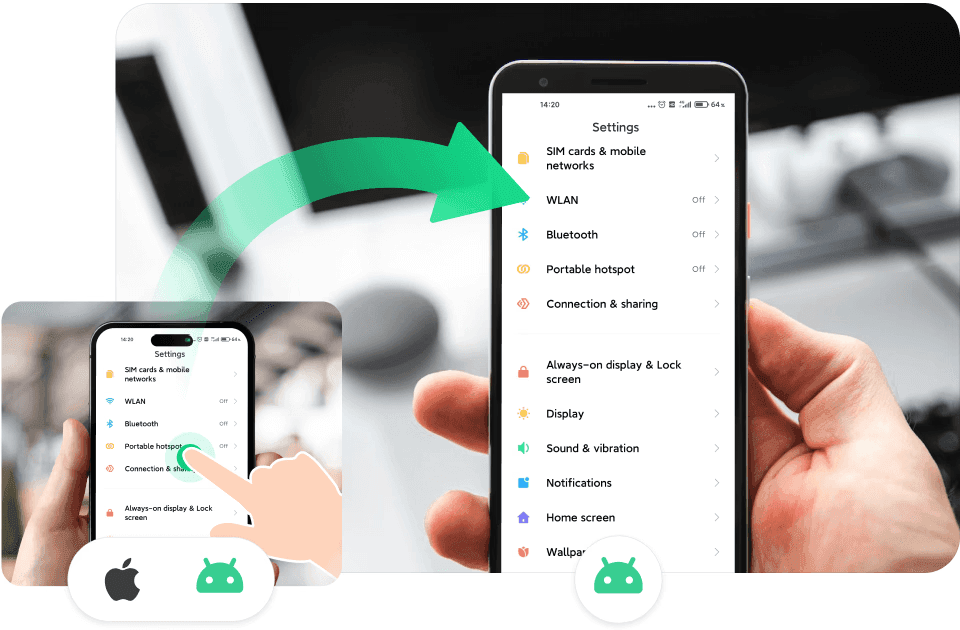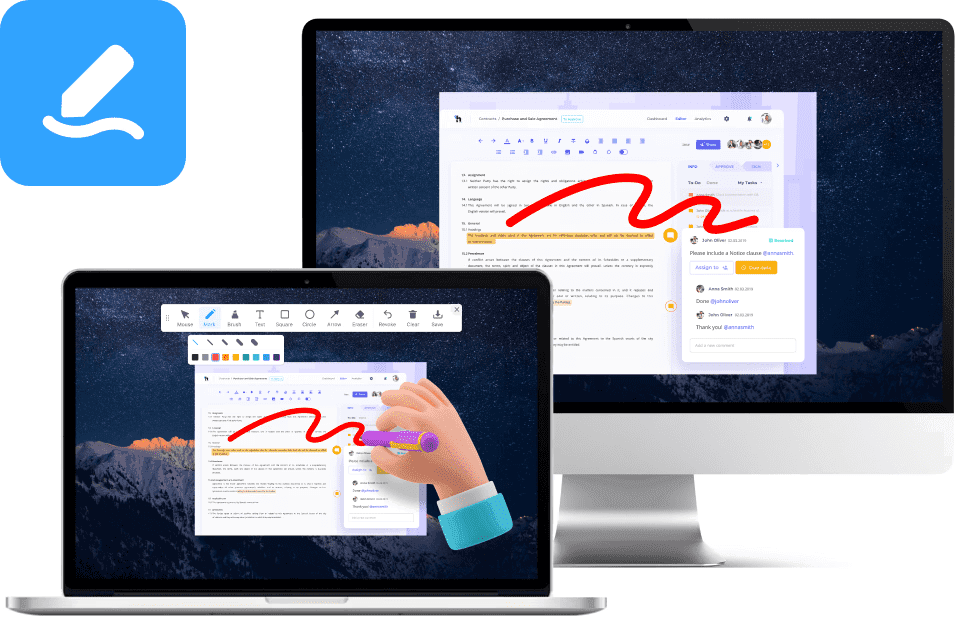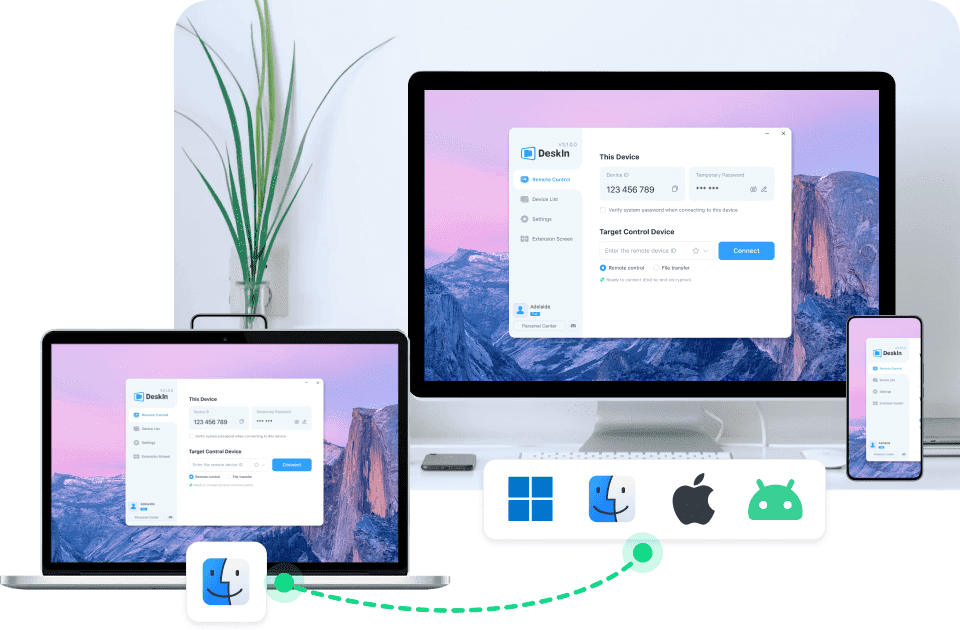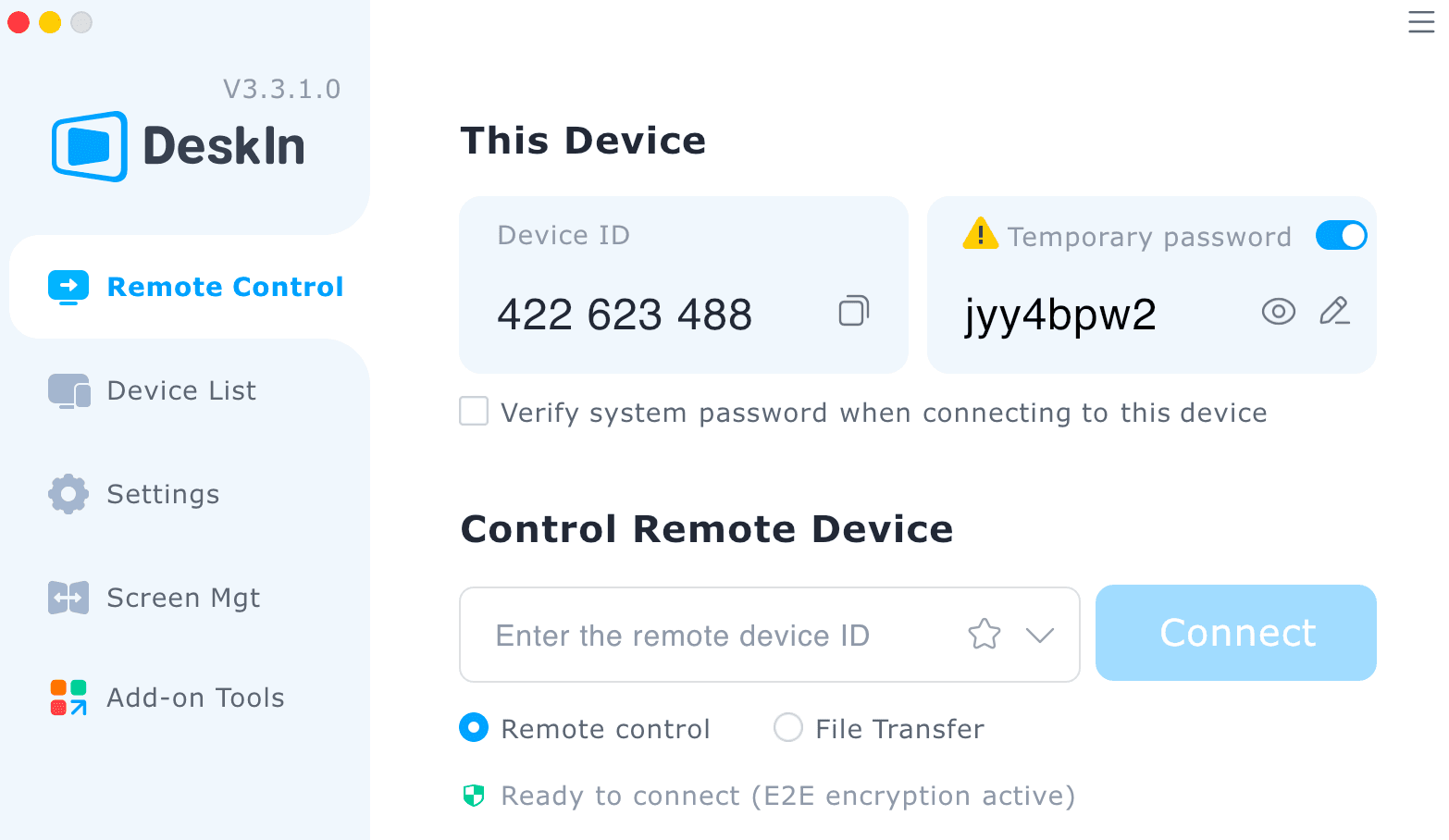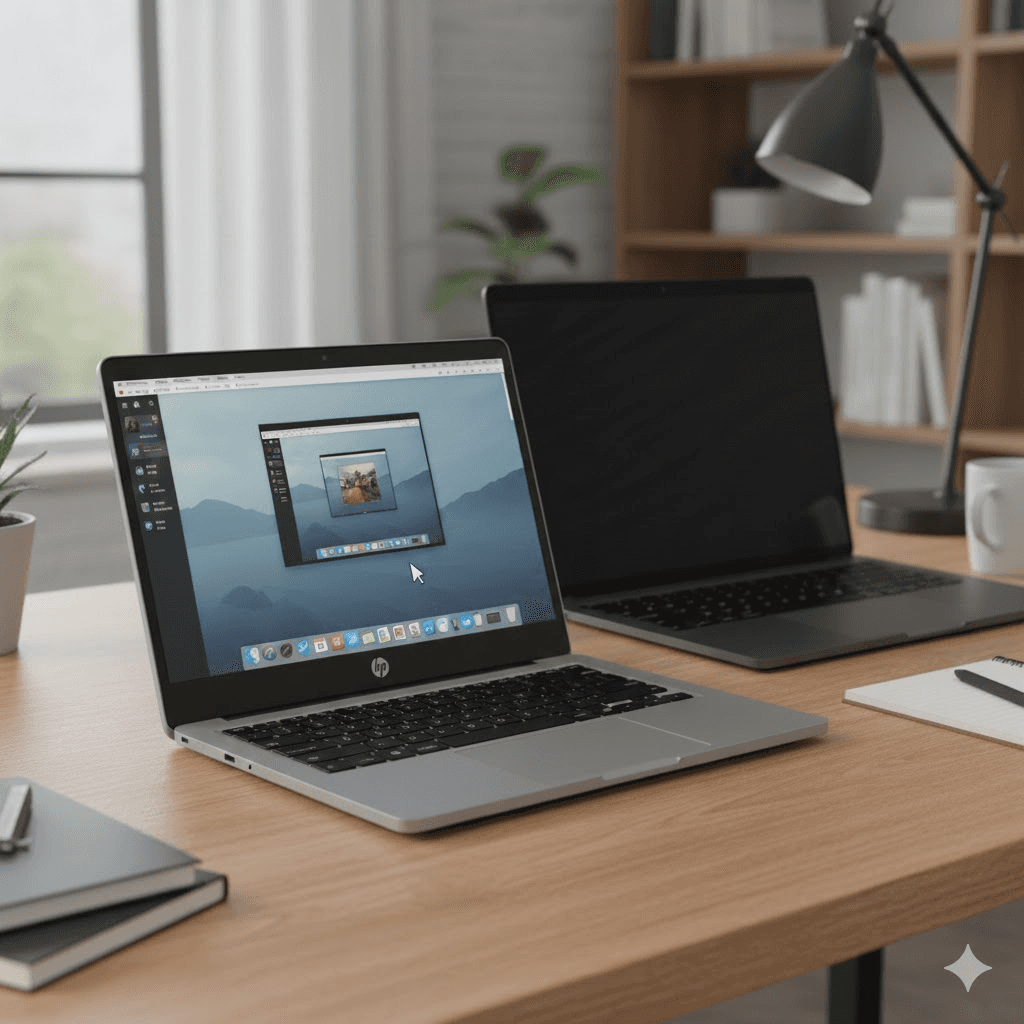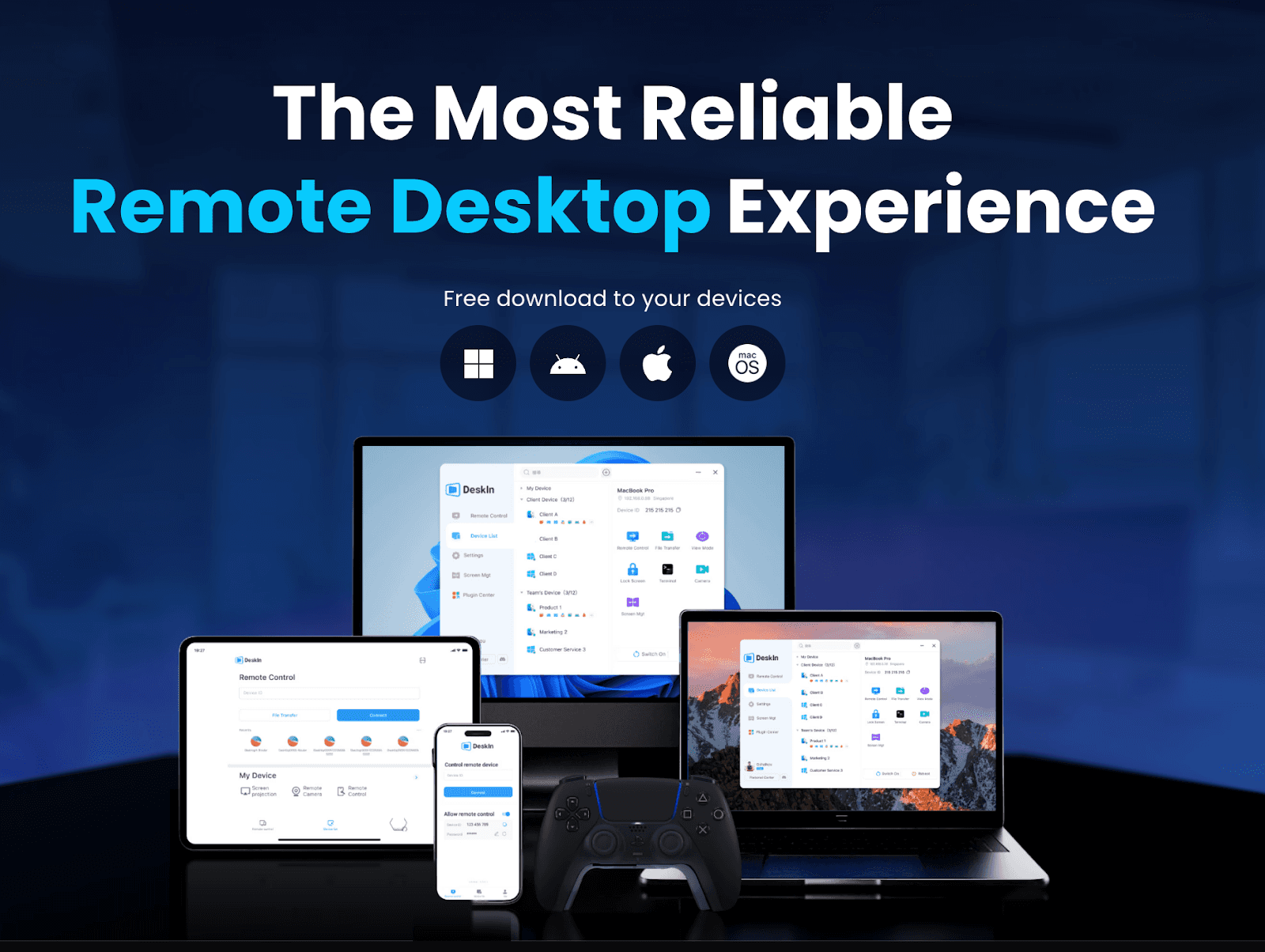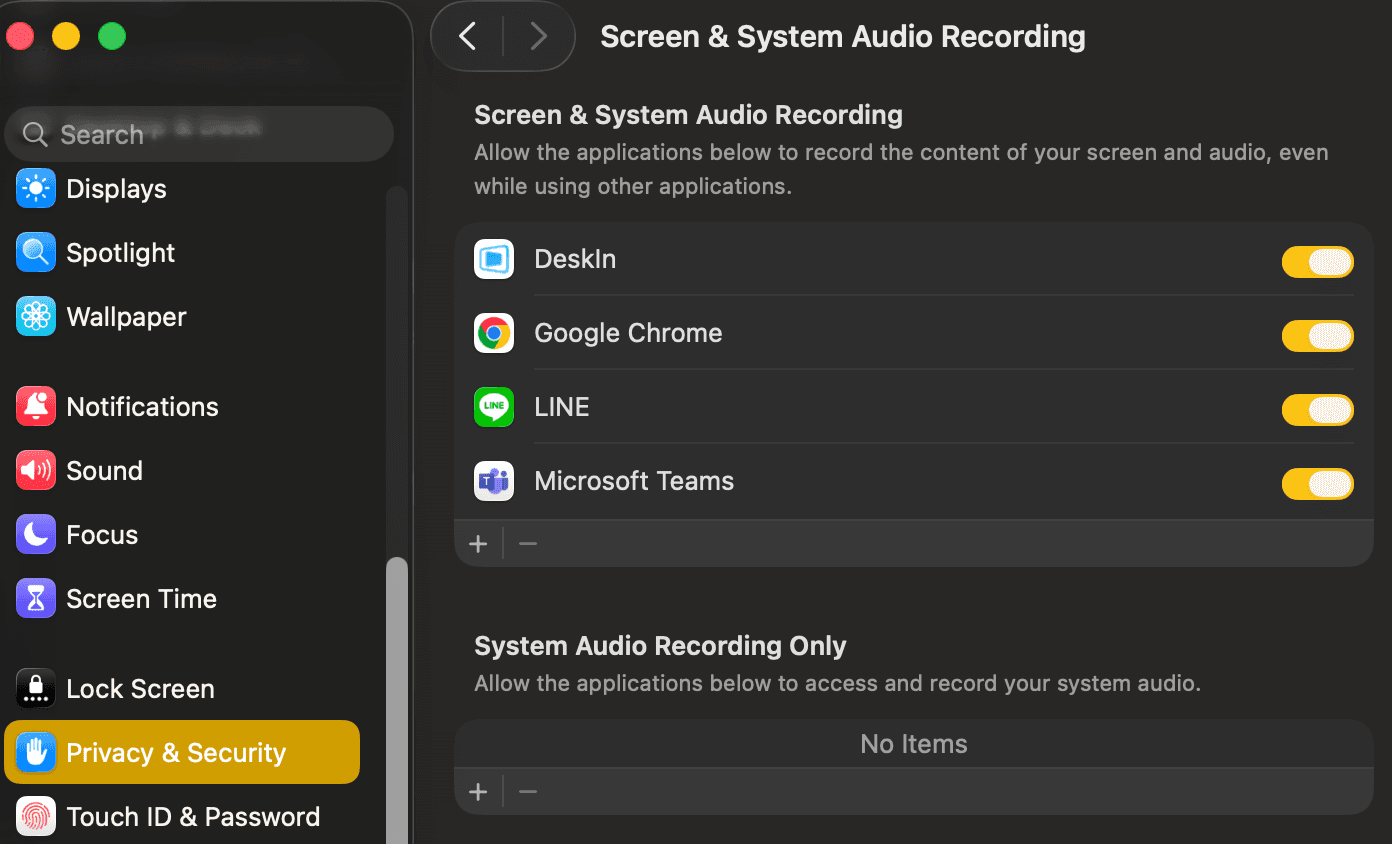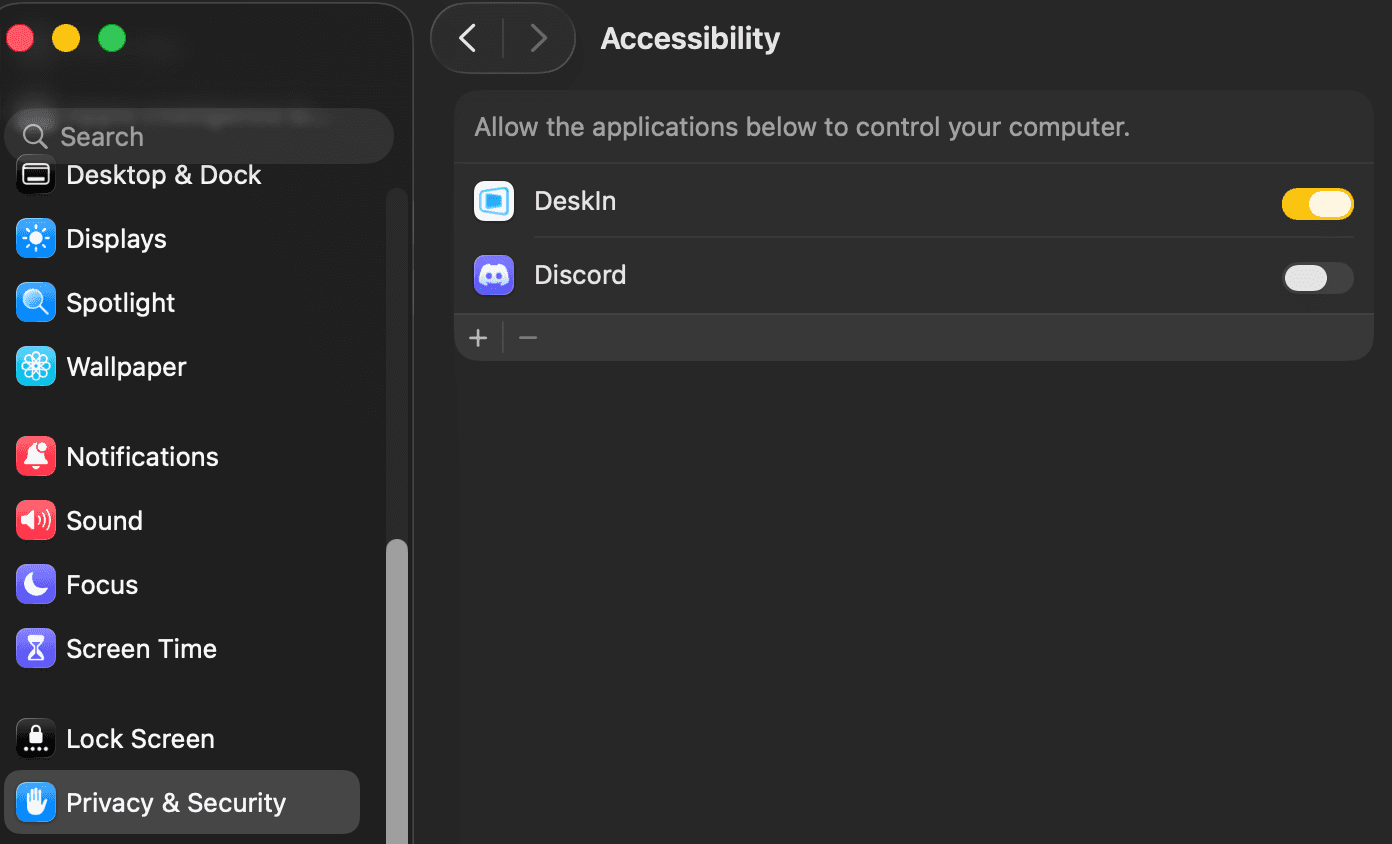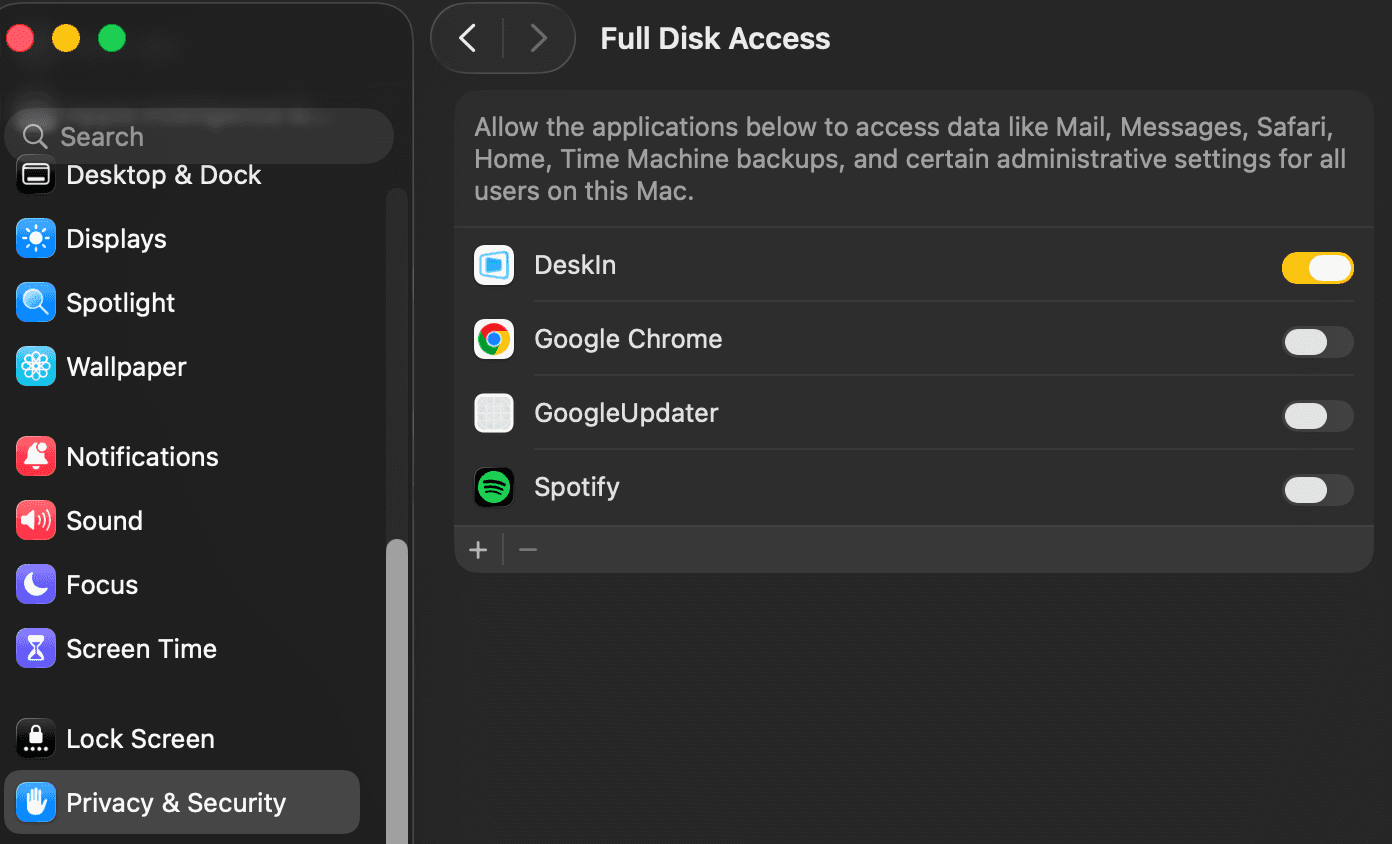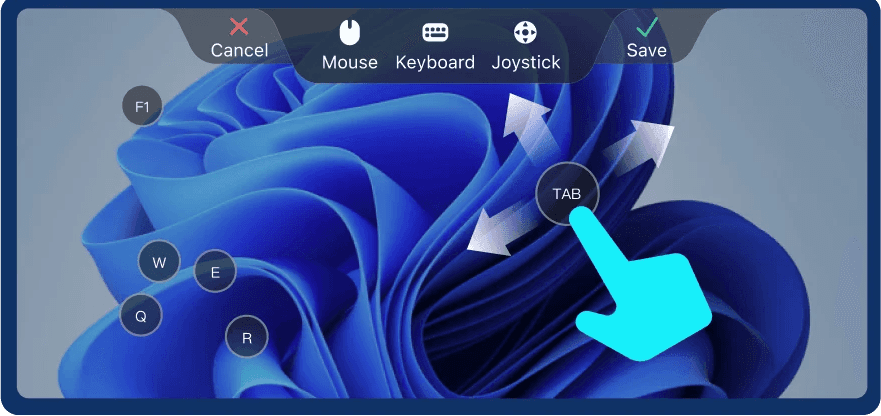5 Giải Pháp Thực Tiễn Nhất để Chạy Ứng Dụng Windows trên Mac
Khi tôi ngồi trong quán cà phê yêu thích của mình, chuyển đổi giữa công việc thiết kế trên macOS và phần mềm kế toán chỉ có trên Windows mà khách hàng của tôi yêu cầu, tôi nhớ lại những gì chúng tôi đã đạt được trong việc giải quyết thách thức tương thích Mac/Windows cổ điển. Nếu bạn là một người du mục kỹ thuật số, nhân viên làm việc từ xa, hoặc chuyên gia sáng tạo đã chọn Mac vì sự tinh tế nhưng vẫn cần tính năng của Windows, bạn hiểu cuộc đấu tranh này.
Phá Vỡ Rào Cản Windows-Mac
Các chuyên gia ngày nay cần sự linh hoạt mà không phải hy sinh. Dù bạn đang quản lý các dự án quốc tế, làm việc với các nhóm đa dạng, hay đơn giản là thích hệ sinh thái Mac nhưng cần một số công cụ cụ thể của Windows, khả năng chạy ứng dụng Windows trên Mac không chỉ tiện lợi—nó là điều cần thiết để duy trì năng suất trong không gian làm việc kỹ thuật số mà ngày càng không biên giới.
Trong hướng dẫn toàn diện này, tôi sẽ chia sẻ 5 phương pháp đã được chứng minh để chạy ứng dụng Windows trên Mac, dựa trên 2 thập kỷ kinh nghiệm của tôi trong việc điều hướng các thách thức nền tảng chéo. Vào cuối, bạn sẽ có một con đường rõ ràng để tích hợp liền mạch các ứng dụng Windows vào quy trình làm việc trên Mac của bạn, với sự chú ý đặc biệt đến DeskIn—giải pháp đang cách mạng hóa cách các chuyên gia xử lý thách thức phổ biến này.

Các máy ảo từ lâu đã là cách tiếp cận truyền thống để chạy Windows trên Mac, cung cấp một môi trường Windows hoàn chỉnh trong hệ thống macOS của bạn.
Cách Hoạt Động Của Máy Ảo
Các máy ảo về cơ bản tạo ra một máy tính bên trong máy tính của bạn, phân bổ một phần công suất xử lý, bộ nhớ và lưu trữ của Mac để chạy một hệ điều hành Windows hoàn chỉnh. Môi trường được bảo vệ này cho phép bạn chạy gần như bất kỳ chương trình Windows nào như thể bạn đang sử dụng một máy tính Windows chuyên dụng.
Các giải pháp máy ảo phổ biến bao gồm:
VMware Fusion: Cung cấp sự tích hợp liền mạch giữa môi trường Mac và Windows
Parallels Desktop: Nổi tiếng với hiệu suất và giao diện thân thiện với người dùng
VirtualBox: Một lựa chọn miễn phí, mã nguồn mở với chức năng tốt
Tuy nhiên, có những hạn chế cần cân nhắc. Các máy ảo tiêu tốn nhiều tài nguyên hệ thống, ảnh hưởng đến tuổi thọ pin và hiệu suất. Chúng cũng yêu cầu bạn phải sở hữu một giấy phép Windows và không gian lưu trữ đủ cho một hệ điều hành thứ hai hoàn chỉnh.
Khi Nào Nên Chọn Máy Ảo
Các máy ảo có ý nghĩa nhất khi:
Bạn cần tính năng Windows toàn diện
Mac của bạn có đủ công suất xử lý và bộ nhớ
Bạn cần truy cập thường xuyên vào nhiều ứng dụng Windows
Bạn cần một môi trường Windows vĩnh viễn với các cài đặt đã lưu
Bạn cũng có thể thích:
Đối với những ai đang tìm kiếm một giải pháp nhẹ nhàng mà không cần giấy phép Windows, Wine (viết tắt của "Wine Is Not an Emulator") cung cấp một lựa chọn thú vị.

Hiểu Cách Tiếp Cận Của Wine
Thay vì tạo ra một môi trường Windows ảo, Wine cung cấp một lớp tương thích để dịch các yêu cầu API Windows thành các yêu cầu POSIX một cách tức thì. Điều này cho phép nhiều ứng dụng Windows chạy trực tiếp trên macOS mà không cần đến Windows.
Wine có nhiều phiên bản cho Mac:
Wineskin: Một wrapper thân thiện với người dùng cho Wine
PlayOnMac: Đơn giản hóa việc cài đặt các trò chơi và ứng dụng Windows
CrossOver: Phiên bản thương mại, được tinh chỉnh của Wine với hỗ trợ kỹ thuật
Điều khiến Wine đặc biệt hấp dẫn là việc sử dụng tài nguyên tối thiểu so với các máy ảo. Theo các chỉ số hiệu suất từ MacWorld, các giải pháp dựa trên Wine thường sử dụng ít bộ nhớ hơn từ 35-50% so với các máy ảo chạy các ứng dụng tương tự.
Hạn Chế Của Wine
Mặc dù Wine ấn tượng, nhưng nó không hỗ trợ tất cả các ứng dụng Windows. Tính tương thích thay đổi rất nhiều:
Các chương trình Windows cũ, đơn giản thường hoạt động hoàn hảo
Các ứng dụng phức tạp hoặc mới hơn có thể có chức năng một phần
Các ứng dụng nhất định sẽ không chạy, đặc biệt là những ứng dụng có yêu cầu phần cứng chuyên dụng
Đối với người dùng kỹ thuật yêu thích phiêu lưu, người cần các ứng dụng Windows cụ thể mà không cần chi phí của một máy ảo, Wine có thể là một giải pháp tuyệt vời—nhưng nó đòi hỏi sự kiên nhẫn và thỉnh thoảng cần khắc phục sự cố.

Đối với những người dùng Mac có bộ xử lý Intel cần hiệu suất Windows tối đa, Boot Camp của Apple vẫn là một lựa chọn khả thi, mặc dù nó đang dần bị loại bỏ với Apple Silicon.
Cách Tiếp Cận Boot Camp
Boot Camp có cách tiếp cận khác hoàn toàn so với các giải pháp khác. Thay vì chạy Windows cùng với macOS, nó cho phép bạn cài đặt Windows trực tiếp trên Mac của bạn, tạo ra một hệ thống khởi động kép. Khi bạn cần Windows, bạn khởi động lại máy tính của mình và khởi động trực tiếp vào Windows, cho bạn 100% tài nguyên của Mac để chạy các ứng dụng Windows.
Ưu điểm là rõ ràng:
Hiệu suất native tương đương với một PC Windows
Tương thích hoàn toàn với tất cả phần mềm và thiết bị ngoại vi của Windows
Truy cập vào các trò chơi chỉ có trên Windows và các ứng dụng tiêu tốn tài nguyên
Điều bất lợi? Bạn không thể chạy macOS và Windows cùng một lúc, yêu cầu khởi động lại mỗi lần bạn cần chuyển đổi hệ điều hành. Thêm vào đó, Boot Camp không được hỗ trợ trên các Mac mới hơn với Apple Silicon (M1, M2, M3 chips).
👉 xem hướng dẫn đầy đủ để Giữ Kết Nối Bất Cứ Khi Nào, Ở Bất Cứ Đâu
Liệu Boot Camp Có Phù Hợp Với Bạn?
Xem xét Boot Camp nếu:
Bạn có một Mac dựa trên Intel
Bạn cần hiệu suất tối đa cho các ứng dụng Windows
Bạn không ngại khởi động lại để chuyển đổi giữa các hệ điều hành
Bạn cần tính tương thích hoàn toàn với phần mềm Windows
Sự phát triển của điện toán đám mây đã giới thiệu một giải pháp thanh lịch khác: truy cập các ứng dụng Windows từ xa mà không cần cài đặt bất kỳ thứ gì lớn trên Mac của bạn.

Cách Các Giải Pháp Windows Dựa Trên Đám Mây Hoạt Động
Truy cập Windows dựa trên đám mây cung cấp một môi trường máy tính để bàn Windows được lưu trữ trên các máy chủ từ xa, mà bạn kết nối qua Mac của bạn. Các dịch vụ này duy trì các cài đặt Windows trên các máy tính mạnh mẽ từ xa, phát trực tiếp giao diện đến thiết bị của bạn.
Các tùy chọn phổ biến bao gồm:
Windows 365: Giải pháp PC đám mây của Microsoft
Amazon WorkSpaces: Cơ sở hạ tầng máy tính để bàn ảo của AWS
Shadow PC: Ban đầu được thiết kế cho trò chơi nhưng cũng hoạt động cho các ứng dụng chuyên nghiệp
Một nghiên cứu gần đây của Forrester Research cho thấy 43% nhân viên làm việc remote hiện đang sử dụng một số dạng giải pháp điện toán đám mây cho tính năng đa nền tảng, với số lượng này ngày càng tăng kể từ năm 2020.
Lợi Ích:
Không cần cài đặt Windows cục bộ
Trải nghiệm nhất quán trên tất cả các thiết bị của bạn
Không cần phần cứng cục bộ mạnh mẽ
Môi trường Windows luôn được cập nhật và duy trì
Hạn Chế:
Cần kết nối internet ổn định, chất lượng cao
Chi phí thuê bao có thể tăng lên theo thời gian
Có thể gặp vấn đề độ trễ cho các ứng dụng tiêu tốn đồ họa
Các vấn đề về quyền riêng tư với công việc trên đám mây
Các giải pháp đám mây đặc biệt có giá trị cho những người du mục kỹ thuật số và các chuyên gia di động cao cần truy cập Windows nhất quán nhưng làm việc trên nhiều thiết bị.
Đây là nơi cuộc chơi thay đổi cho những người dùng Mac cần chức năng của Windows.

Là một người đã thử mọi phương pháp ở trên, tôi đã hoài nghi khi lần đầu tiên phát hiện ra DeskIn. Tuy nhiên, giải pháp sáng tạo này đã thay đổi hoàn toàn cách tôi tiếp cận thách thức Windows trên Mac.
DeskIn có cách tiếp cận lai kết hợp những yếu tố tốt nhất của máy ảo và điện toán đám mây trong khi loại bỏ nhiều hạn chế của chúng. Kết quả là một trải nghiệm liền mạch mà cảm giác giống như chạy các ứng dụng Windows gốc trên Mac của bạn.
👍 Các Tính Năng Chính Khiến DeskIn Nổi Bật
Quản Lý Tài Nguyên Thông Minh: DeskIn tối ưu hóa bộ nhớ và mức sử dụng CPU dựa trên ứng dụng Windows cụ thể mà bạn đang chạy
Hợp Nhất Giao Diện Người Dùng Liền Mạch: Các ứng dụng Windows xuất hiện cùng với các ứng dụng Mac của bạn, chia sẻ cùng một màn hình
Clipboard Đa Nền Tảng: Copy và paste giữa các ứng dụng Windows và Mac một cách dễ dàng
Tích Hợp Hệ Thống Tệp: Truy cập tệp Mac của bạn trực tiếp từ các ứng dụng Windows. Xem cách bạn có thể dễ dàng chuyển các tệp lớn tại đây.
Theo thử nghiệm độc lập của TechBenchmark, DeskIn sử dụng khoảng 40% tài nguyên hệ thống ít hơn so với các máy ảo truyền thống trong khi cung cấp hiệu suất tương tự cho hầu hết các ứng dụng hàng ngày.
DeskIn đặc biệt nổi bật cho các chuyên gia:
Cần chạy phần mềm kinh doanh Windows chuyên biệt
Làm việc với khách hàng hoặc đồng nghiệp sử dụng công cụ chỉ có trên Windows
Cần truy cập thỉnh thoảng vào các tiện ích chỉ có trên Windows
Đánh giá một quy trình làm việc sạch sẽ, tích hợp mà không cần chuyển đổi ngữ cảnh liên tục

Kết Luận: Lựa Chọn Chiến Lược Windows Trên Mac Của Bạn
Sau khi khám phá năm cách tiếp cận để chạy ứng dụng Windows trên Mac, giải pháp đúng cho bạn phụ thuộc vào nhu cầu cụ thể của bạn:
Máy Ảo cung cấp trải nghiệm Windows toàn diện nhất nhưng với yêu cầu tài nguyên cao hơn
Wine cung cấp khả năng tương thích nhẹ cho nhiều ứng dụng Windows mà không cần Windows
Boot Camp cung cấp hiệu suất Windows gốc cho các Mac dựa trên Intel nhưng yêu cầu khởi động lại
Các Giải Pháp Đám Mây loại bỏ những yêu cầu cài đặt cục bộ nhưng cần internet đáng tin cậy
DeskIn cân bằng hiệu suất, sự tiện lợi và sự tích hợp cho một trải nghiệm đa nền tảng liền mạch
Khi công việc của chúng ta ngày càng độc lập về địa điểm và đa nền tảng, khả năng tận dụng cả hai hệ sinh thái trở nên không chỉ hữu ích mà còn thiết yếu. Các rào cản giữa các hệ điều hành tiếp tục mờ nhạt, và những giải pháp như DeskIn dẫn đầu trong việc tạo ra những trải nghiệm máy tính thực sự thống nhất.
Đối với các chuyên gia hiện đại mong muốn tối đa hóa năng suất mà không hy sinh trải nghiệm Mac mà họ yêu thích, tôi khuyên bạn nên tải DeskIn trực tiếp từ DeskIn.io và trải nghiệm sự khác biệt cho chính mình. Dù bạn là một freelancer đang quản lý nhiều khách hàng với những yêu cầu hệ thống khác nhau hay một nhân viên làm việc từ xa cần các công cụ Windows chuyên dụng, DeskIn cung cấp sự linh hoạt và hiệu suất để giữ cho bạn luôn năng suất ở bất cứ đâu.
5 Giải Pháp Thực Tiễn Nhất để Chạy Ứng Dụng Windows trên Mac
Khi tôi ngồi trong quán cà phê yêu thích của mình, chuyển đổi giữa công việc thiết kế trên macOS và phần mềm kế toán chỉ có trên Windows mà khách hàng của tôi yêu cầu, tôi nhớ lại những gì chúng tôi đã đạt được trong việc giải quyết thách thức tương thích Mac/Windows cổ điển. Nếu bạn là một người du mục kỹ thuật số, nhân viên làm việc từ xa, hoặc chuyên gia sáng tạo đã chọn Mac vì sự tinh tế nhưng vẫn cần tính năng của Windows, bạn hiểu cuộc đấu tranh này.
Phá Vỡ Rào Cản Windows-Mac
Các chuyên gia ngày nay cần sự linh hoạt mà không phải hy sinh. Dù bạn đang quản lý các dự án quốc tế, làm việc với các nhóm đa dạng, hay đơn giản là thích hệ sinh thái Mac nhưng cần một số công cụ cụ thể của Windows, khả năng chạy ứng dụng Windows trên Mac không chỉ tiện lợi—nó là điều cần thiết để duy trì năng suất trong không gian làm việc kỹ thuật số mà ngày càng không biên giới.
Trong hướng dẫn toàn diện này, tôi sẽ chia sẻ 5 phương pháp đã được chứng minh để chạy ứng dụng Windows trên Mac, dựa trên 2 thập kỷ kinh nghiệm của tôi trong việc điều hướng các thách thức nền tảng chéo. Vào cuối, bạn sẽ có một con đường rõ ràng để tích hợp liền mạch các ứng dụng Windows vào quy trình làm việc trên Mac của bạn, với sự chú ý đặc biệt đến DeskIn—giải pháp đang cách mạng hóa cách các chuyên gia xử lý thách thức phổ biến này.

Các máy ảo từ lâu đã là cách tiếp cận truyền thống để chạy Windows trên Mac, cung cấp một môi trường Windows hoàn chỉnh trong hệ thống macOS của bạn.
Cách Hoạt Động Của Máy Ảo
Các máy ảo về cơ bản tạo ra một máy tính bên trong máy tính của bạn, phân bổ một phần công suất xử lý, bộ nhớ và lưu trữ của Mac để chạy một hệ điều hành Windows hoàn chỉnh. Môi trường được bảo vệ này cho phép bạn chạy gần như bất kỳ chương trình Windows nào như thể bạn đang sử dụng một máy tính Windows chuyên dụng.
Các giải pháp máy ảo phổ biến bao gồm:
VMware Fusion: Cung cấp sự tích hợp liền mạch giữa môi trường Mac và Windows
Parallels Desktop: Nổi tiếng với hiệu suất và giao diện thân thiện với người dùng
VirtualBox: Một lựa chọn miễn phí, mã nguồn mở với chức năng tốt
Tuy nhiên, có những hạn chế cần cân nhắc. Các máy ảo tiêu tốn nhiều tài nguyên hệ thống, ảnh hưởng đến tuổi thọ pin và hiệu suất. Chúng cũng yêu cầu bạn phải sở hữu một giấy phép Windows và không gian lưu trữ đủ cho một hệ điều hành thứ hai hoàn chỉnh.
Khi Nào Nên Chọn Máy Ảo
Các máy ảo có ý nghĩa nhất khi:
Bạn cần tính năng Windows toàn diện
Mac của bạn có đủ công suất xử lý và bộ nhớ
Bạn cần truy cập thường xuyên vào nhiều ứng dụng Windows
Bạn cần một môi trường Windows vĩnh viễn với các cài đặt đã lưu
Bạn cũng có thể thích:
Đối với những ai đang tìm kiếm một giải pháp nhẹ nhàng mà không cần giấy phép Windows, Wine (viết tắt của "Wine Is Not an Emulator") cung cấp một lựa chọn thú vị.

Hiểu Cách Tiếp Cận Của Wine
Thay vì tạo ra một môi trường Windows ảo, Wine cung cấp một lớp tương thích để dịch các yêu cầu API Windows thành các yêu cầu POSIX một cách tức thì. Điều này cho phép nhiều ứng dụng Windows chạy trực tiếp trên macOS mà không cần đến Windows.
Wine có nhiều phiên bản cho Mac:
Wineskin: Một wrapper thân thiện với người dùng cho Wine
PlayOnMac: Đơn giản hóa việc cài đặt các trò chơi và ứng dụng Windows
CrossOver: Phiên bản thương mại, được tinh chỉnh của Wine với hỗ trợ kỹ thuật
Điều khiến Wine đặc biệt hấp dẫn là việc sử dụng tài nguyên tối thiểu so với các máy ảo. Theo các chỉ số hiệu suất từ MacWorld, các giải pháp dựa trên Wine thường sử dụng ít bộ nhớ hơn từ 35-50% so với các máy ảo chạy các ứng dụng tương tự.
Hạn Chế Của Wine
Mặc dù Wine ấn tượng, nhưng nó không hỗ trợ tất cả các ứng dụng Windows. Tính tương thích thay đổi rất nhiều:
Các chương trình Windows cũ, đơn giản thường hoạt động hoàn hảo
Các ứng dụng phức tạp hoặc mới hơn có thể có chức năng một phần
Các ứng dụng nhất định sẽ không chạy, đặc biệt là những ứng dụng có yêu cầu phần cứng chuyên dụng
Đối với người dùng kỹ thuật yêu thích phiêu lưu, người cần các ứng dụng Windows cụ thể mà không cần chi phí của một máy ảo, Wine có thể là một giải pháp tuyệt vời—nhưng nó đòi hỏi sự kiên nhẫn và thỉnh thoảng cần khắc phục sự cố.

Đối với những người dùng Mac có bộ xử lý Intel cần hiệu suất Windows tối đa, Boot Camp của Apple vẫn là một lựa chọn khả thi, mặc dù nó đang dần bị loại bỏ với Apple Silicon.
Cách Tiếp Cận Boot Camp
Boot Camp có cách tiếp cận khác hoàn toàn so với các giải pháp khác. Thay vì chạy Windows cùng với macOS, nó cho phép bạn cài đặt Windows trực tiếp trên Mac của bạn, tạo ra một hệ thống khởi động kép. Khi bạn cần Windows, bạn khởi động lại máy tính của mình và khởi động trực tiếp vào Windows, cho bạn 100% tài nguyên của Mac để chạy các ứng dụng Windows.
Ưu điểm là rõ ràng:
Hiệu suất native tương đương với một PC Windows
Tương thích hoàn toàn với tất cả phần mềm và thiết bị ngoại vi của Windows
Truy cập vào các trò chơi chỉ có trên Windows và các ứng dụng tiêu tốn tài nguyên
Điều bất lợi? Bạn không thể chạy macOS và Windows cùng một lúc, yêu cầu khởi động lại mỗi lần bạn cần chuyển đổi hệ điều hành. Thêm vào đó, Boot Camp không được hỗ trợ trên các Mac mới hơn với Apple Silicon (M1, M2, M3 chips).
👉 xem hướng dẫn đầy đủ để Giữ Kết Nối Bất Cứ Khi Nào, Ở Bất Cứ Đâu
Liệu Boot Camp Có Phù Hợp Với Bạn?
Xem xét Boot Camp nếu:
Bạn có một Mac dựa trên Intel
Bạn cần hiệu suất tối đa cho các ứng dụng Windows
Bạn không ngại khởi động lại để chuyển đổi giữa các hệ điều hành
Bạn cần tính tương thích hoàn toàn với phần mềm Windows
Sự phát triển của điện toán đám mây đã giới thiệu một giải pháp thanh lịch khác: truy cập các ứng dụng Windows từ xa mà không cần cài đặt bất kỳ thứ gì lớn trên Mac của bạn.

Cách Các Giải Pháp Windows Dựa Trên Đám Mây Hoạt Động
Truy cập Windows dựa trên đám mây cung cấp một môi trường máy tính để bàn Windows được lưu trữ trên các máy chủ từ xa, mà bạn kết nối qua Mac của bạn. Các dịch vụ này duy trì các cài đặt Windows trên các máy tính mạnh mẽ từ xa, phát trực tiếp giao diện đến thiết bị của bạn.
Các tùy chọn phổ biến bao gồm:
Windows 365: Giải pháp PC đám mây của Microsoft
Amazon WorkSpaces: Cơ sở hạ tầng máy tính để bàn ảo của AWS
Shadow PC: Ban đầu được thiết kế cho trò chơi nhưng cũng hoạt động cho các ứng dụng chuyên nghiệp
Một nghiên cứu gần đây của Forrester Research cho thấy 43% nhân viên làm việc remote hiện đang sử dụng một số dạng giải pháp điện toán đám mây cho tính năng đa nền tảng, với số lượng này ngày càng tăng kể từ năm 2020.
Lợi Ích:
Không cần cài đặt Windows cục bộ
Trải nghiệm nhất quán trên tất cả các thiết bị của bạn
Không cần phần cứng cục bộ mạnh mẽ
Môi trường Windows luôn được cập nhật và duy trì
Hạn Chế:
Cần kết nối internet ổn định, chất lượng cao
Chi phí thuê bao có thể tăng lên theo thời gian
Có thể gặp vấn đề độ trễ cho các ứng dụng tiêu tốn đồ họa
Các vấn đề về quyền riêng tư với công việc trên đám mây
Các giải pháp đám mây đặc biệt có giá trị cho những người du mục kỹ thuật số và các chuyên gia di động cao cần truy cập Windows nhất quán nhưng làm việc trên nhiều thiết bị.
Đây là nơi cuộc chơi thay đổi cho những người dùng Mac cần chức năng của Windows.

Là một người đã thử mọi phương pháp ở trên, tôi đã hoài nghi khi lần đầu tiên phát hiện ra DeskIn. Tuy nhiên, giải pháp sáng tạo này đã thay đổi hoàn toàn cách tôi tiếp cận thách thức Windows trên Mac.
DeskIn có cách tiếp cận lai kết hợp những yếu tố tốt nhất của máy ảo và điện toán đám mây trong khi loại bỏ nhiều hạn chế của chúng. Kết quả là một trải nghiệm liền mạch mà cảm giác giống như chạy các ứng dụng Windows gốc trên Mac của bạn.
👍 Các Tính Năng Chính Khiến DeskIn Nổi Bật
Quản Lý Tài Nguyên Thông Minh: DeskIn tối ưu hóa bộ nhớ và mức sử dụng CPU dựa trên ứng dụng Windows cụ thể mà bạn đang chạy
Hợp Nhất Giao Diện Người Dùng Liền Mạch: Các ứng dụng Windows xuất hiện cùng với các ứng dụng Mac của bạn, chia sẻ cùng một màn hình
Clipboard Đa Nền Tảng: Copy và paste giữa các ứng dụng Windows và Mac một cách dễ dàng
Tích Hợp Hệ Thống Tệp: Truy cập tệp Mac của bạn trực tiếp từ các ứng dụng Windows. Xem cách bạn có thể dễ dàng chuyển các tệp lớn tại đây.
Theo thử nghiệm độc lập của TechBenchmark, DeskIn sử dụng khoảng 40% tài nguyên hệ thống ít hơn so với các máy ảo truyền thống trong khi cung cấp hiệu suất tương tự cho hầu hết các ứng dụng hàng ngày.
DeskIn đặc biệt nổi bật cho các chuyên gia:
Cần chạy phần mềm kinh doanh Windows chuyên biệt
Làm việc với khách hàng hoặc đồng nghiệp sử dụng công cụ chỉ có trên Windows
Cần truy cập thỉnh thoảng vào các tiện ích chỉ có trên Windows
Đánh giá một quy trình làm việc sạch sẽ, tích hợp mà không cần chuyển đổi ngữ cảnh liên tục

Kết Luận: Lựa Chọn Chiến Lược Windows Trên Mac Của Bạn
Sau khi khám phá năm cách tiếp cận để chạy ứng dụng Windows trên Mac, giải pháp đúng cho bạn phụ thuộc vào nhu cầu cụ thể của bạn:
Máy Ảo cung cấp trải nghiệm Windows toàn diện nhất nhưng với yêu cầu tài nguyên cao hơn
Wine cung cấp khả năng tương thích nhẹ cho nhiều ứng dụng Windows mà không cần Windows
Boot Camp cung cấp hiệu suất Windows gốc cho các Mac dựa trên Intel nhưng yêu cầu khởi động lại
Các Giải Pháp Đám Mây loại bỏ những yêu cầu cài đặt cục bộ nhưng cần internet đáng tin cậy
DeskIn cân bằng hiệu suất, sự tiện lợi và sự tích hợp cho một trải nghiệm đa nền tảng liền mạch
Khi công việc của chúng ta ngày càng độc lập về địa điểm và đa nền tảng, khả năng tận dụng cả hai hệ sinh thái trở nên không chỉ hữu ích mà còn thiết yếu. Các rào cản giữa các hệ điều hành tiếp tục mờ nhạt, và những giải pháp như DeskIn dẫn đầu trong việc tạo ra những trải nghiệm máy tính thực sự thống nhất.
Đối với các chuyên gia hiện đại mong muốn tối đa hóa năng suất mà không hy sinh trải nghiệm Mac mà họ yêu thích, tôi khuyên bạn nên tải DeskIn trực tiếp từ DeskIn.io và trải nghiệm sự khác biệt cho chính mình. Dù bạn là một freelancer đang quản lý nhiều khách hàng với những yêu cầu hệ thống khác nhau hay một nhân viên làm việc từ xa cần các công cụ Windows chuyên dụng, DeskIn cung cấp sự linh hoạt và hiệu suất để giữ cho bạn luôn năng suất ở bất cứ đâu.






